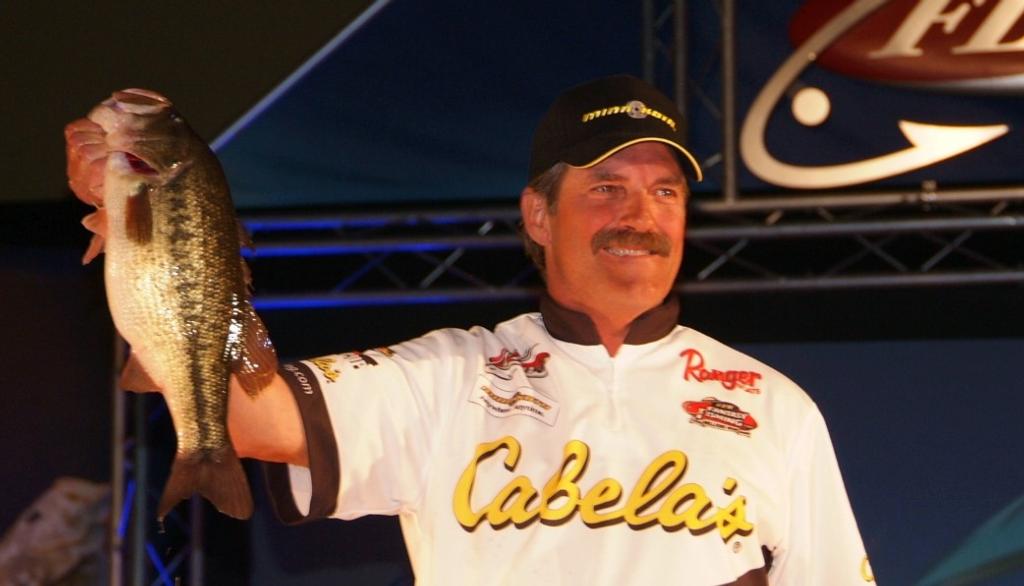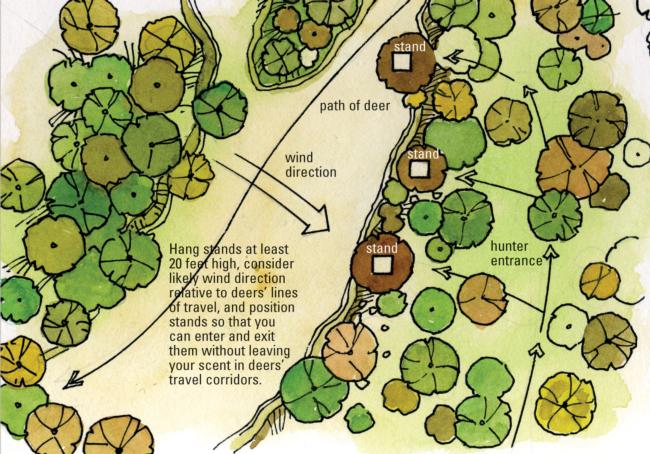Stand by for bucks
Ron Shuffield’s tips for scouting and stand placement

————————————–
Editor’s note: This is just one article from a recent issue of FLW Outdoors Magazine, which now publishes a Sportsman’s Guide section. To learn more about the magazine and how to subscribe, click here.
————————————–
When late summer rolls around, Ron Shuffield’s thoughts turn from leaping bass and tournament weigh-ins to deep woods and crisp fall weather. As an avid deer hunter, the FLW Tour pro spends much of his offseason time scouting the foothills of the rugged Ouachita Mountains near his home in Bismarck, Ark. And just as it takes observation and preparation to win a bass tournament, the same prerequisites are required for successful deer hunting.
“Probably the biggest mistake most hunters make is not getting in the woods well before the season starts to pattern deer,” Shuffield notes. “They’ll just scout a few days before the season opens and hang some stands. They might get lucky, but I’d rather make my own luck.”
Here are Shuffield’s five best preseason tips:
Find the bushytails
Deer would rather eat white oak acorns than just about anything else; find the best sources, and the bucks will be there. When he’s scouting, Shuffield will listen and look for squirrels cutting acorns.
“Try to find the areas with the biggest concentrations of squirrels and dropping acorns,” Shuffield says. “That’s where the deer will be.”
Getting in and out
The best way to and from a tree stand is a straight line. If a hunter has to take a meandering course to reach the stand, it increases the likelihood that he is alerting deer to his presence. Determine the shortest and quietest way to a stand and follow it.
“I always wear rubber boots, even when I’m scouting,” Shuffield says. “I don’t want the deer to even know I’ve been there if I can help it.”
Consider the wind
When he finds and waypoints a place to hang a stand, Shuffield makes note of where the predominant wind is likely to be blowing from during hunting season, not from where it’s blowing when he’s scouting. He then hangs a stand based on a deer’s likely approach direction.
“The wind changes in the fall and generally starts coming more out of the west and the north more,” Shuffield says. “Keep that in mind when you’re looking for a stand tree.”

Eliminate the impossible
Some stands are never meant to be hung, such as where the wind constantly swirls around in a creek bottom or gully, or where the surrounding cover is so sparse that a hunter is skylighted.
“It’s better just to try to find the next best place in a buck’s line of travel to set up,” Shuffield says. “If you make it easy for him to bust you, you’ll never get a crack at him.”
Hang it high
Well before the season begins, Shuffield hangs his stands. Routinely, he positions them 20 to 25 feet above the ground. His rationale: The higher his stand is, the less likely a buck will catch his scent even if the wind is blowing the wrong way.
“Height gives you a better chance of staying out of a buck’s peripheral vision, too,” Shuffield says.